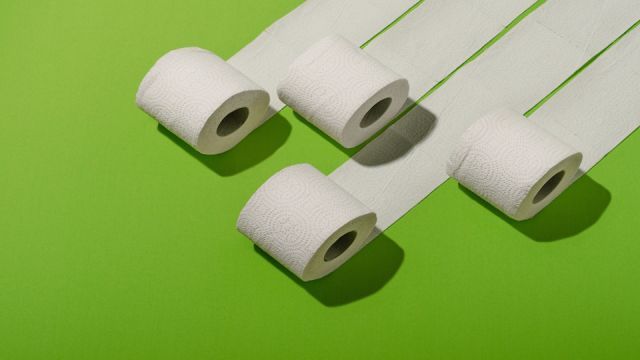
We all have to do it, and we all do it, but do we all do it the correct way? The universal human activity of cleaning up after defecation is a reality for everyone, but not everyone performs this common activity in the same way. There are indeed, some techniques that are more effective than others. Knowing how to keep your backend clean, fresh, and happy is something no one is too old to learn!
Why wiping correctly is important
Keeping clean and wiping correctly after a bowel movement are both critical for preventing the spread of bacteria and reducing odor. In addition, wiping inccorectly can cause unnecessary irritation that may lead to additional problems.
Toilet paper matters
There are some things in life you can downgrade to save money, but toilet paper is just not one of them. Here are a few types of toilet paper to avoid at all costs:
Bleached toilet paper: Many white toilet papers are treated with chlorine bleach. Chlorine can irritate your skin and can also be dangerous. This is because bleaching paper with chlorine may result in the formation of carcinogenic furans and dioxins.
Scented toilet paper: The overwhelming majority of synthetic fragrance chemicals are manufactured from petrochemicals. This means that they can include toxic substances such as phthalates and derivatives of benzene. Phthalates alone have been linked to hormone disruption, neurological problems, obesity, reproductive difficulties, and certain cancers — and they’re just one of the many chemical types that can reside within the “fragrance” category.
If you’re thinking, “Well, at least I’m not eating these chemicals,” you should know that if your toilet paper is scented, the fragrance chemicals can still get into your body even if you don’t ingest them. Many substances can seep through the pores in the skin and enter the bloodstream. Some of these toxins bioaccumulate, meaning that they are not flushed through our systems and are instead stored in our tissues. Eventually, these stored toxins may lead to health issues, such as the ones described above in regards to phthalates.
Risks of using scented toilet paper
Using scented toilet paper, especially on a regular basis, may lead to
- Skin irritation around your genitals and rectum
- Puffiness and swelling of private areas and surrounding skin
- Urinary tract infections
- Fungal infections (including yeast infections)
So, there you have it. An excellent reason to sniff your toilet paper before you use it! Obviously, if you’re at a friend’s house or a public place, you may not have another toilet paper option and may be forced to use the scented stuff. However, it’s one reason to keep a roll of your own unscented paper on hand. Or, at least a few sheets in a baggie in your pocket. You may feel silly, but at least you won’t be wiping potentially toxic chemicals onto your bum.
Recycled toilet paper: Recycled toilet paper seems like a really great and environmentally friendly idea on the surface. However, it’s highly unfortunate that many of these papers contain bisphenol Also known as BPA. This chemical compound has been linked to the disruption of hormonal function, obesity, diabetes, and even certain cancers. This compound has been banned from many products, including children’s toys. However, it may still be present in recycled toilet paper because of its presence in other papers (such as receipt paper) often used in the manufacturing process.
The best toilet paper: When choosing a toilet paper, be sure to read the label carefully to make sure it has no fragrances or dyes and that it hasn’t been treated with chlorine.
Your best bet is unscented, non-recycled toilet paper that has been bleached using oxygen or ozone (or hydrogen). It may have a “TCF” designation, meaning that it is Totally Chlorine Free. Consider using bagasse to make toilet paper. It is made from sugar cane and is entirely biodegradable.
The best wiping method
Start in the seated position and pull off three squares of toilet paper. Make a small wad with the paper. Reach behind your buttocks, leaning on the opposite cheek – remain seated. Wipe using your pointer, middle and ring fingers. Keep your middle finger raised slightly and your pointer and ring fingers resting behind. Use a moderate amount of pressure to wipe from front to back. Repeat using the same piece of toilet paper.
If needed, use two more squares of toilet paper and repeat the process using a bit more pressure until you are clean. Finish up your wiping routine using an environmentally friendly personal wipe or an organic cloth and some warm water.
Wiping too much or too little
A common condition, known as pruritus ani ( anal itching) occurs when there is excessive wiping that leads to dry skin or small abrasions. An effort to scratch the itch often leads to more wiping which causes more irritation. Not wiping enough can result in stool left around the anus which can also lead to irritation.
Rough toilet tissue or other products can also dry out the skin making matters worse, and this results in a vicious cycle of itching. To lubricate and soothe dry skin around the anus, use a little coconut oil. If the itching continues or gets worse and is accompanied by bleeding or pain it is important to see your physician as this could be due to a yeast infection, eczema, or something requiring a doctor’s attention.
Use a bidet, be kind to your bottom
Bidets are the preferred method of personal cleansing used around the world. You can avoid all of the irritation of toilet paper and save a few trees at the same time if you use a bidet. Handheld versions are great if you don’t have a permanent one installed in your home. Plus, as a bonus, handheld bidets can travel with you. Using a bidet will leave you feeling fresh and clean while reducing the irritation that wiping often causes.
-The Alternative Daily

